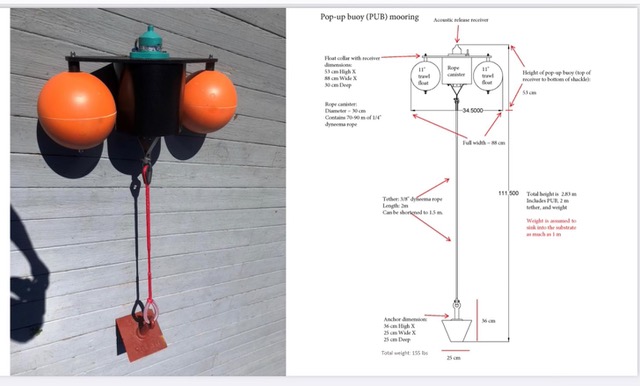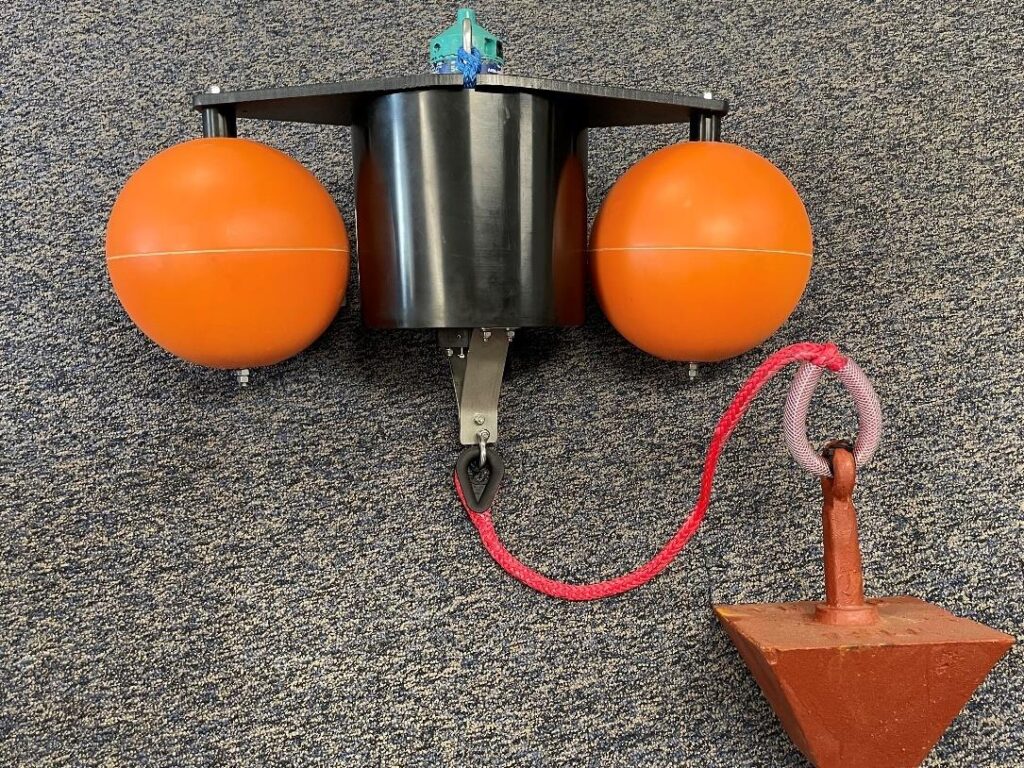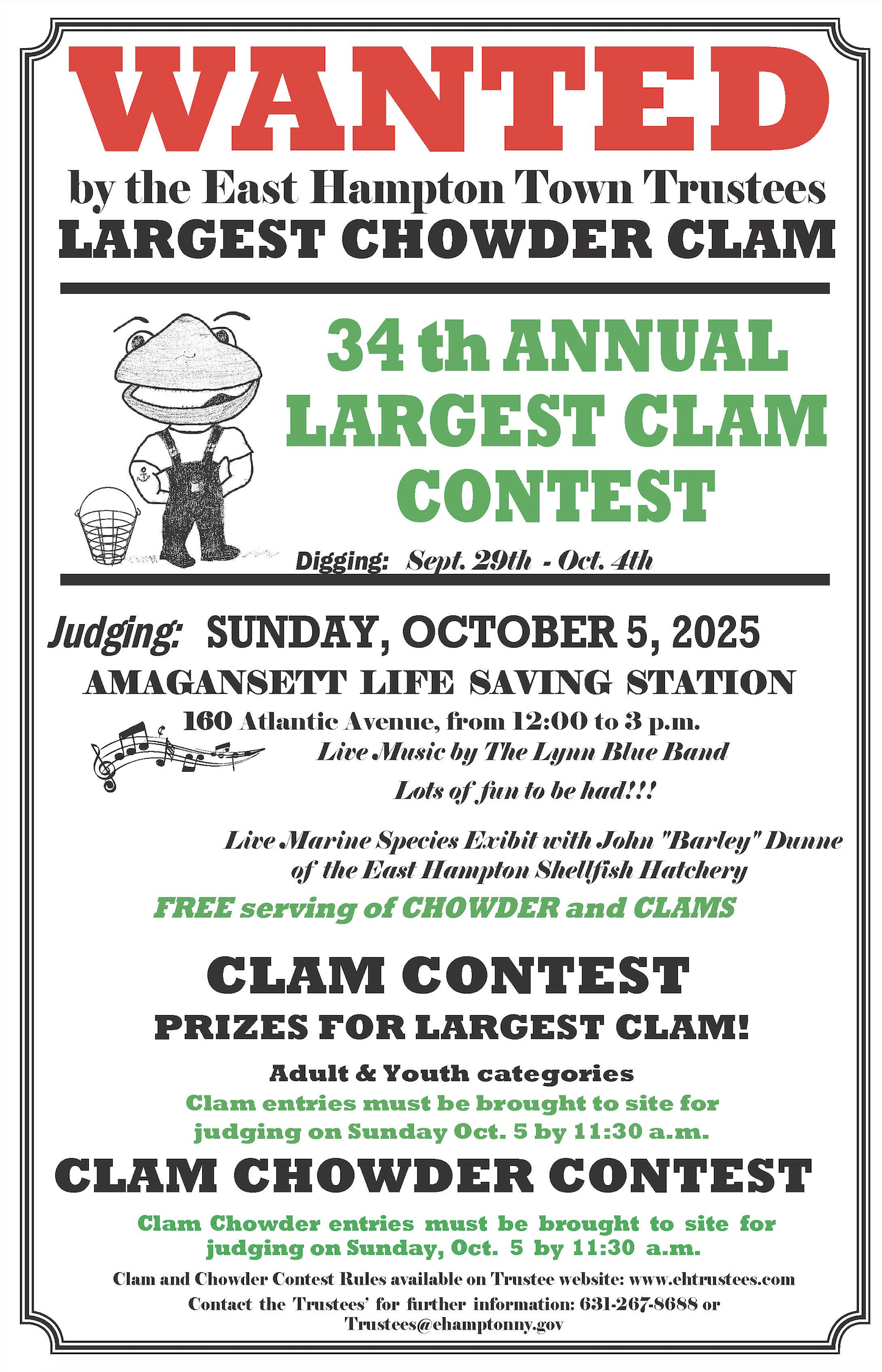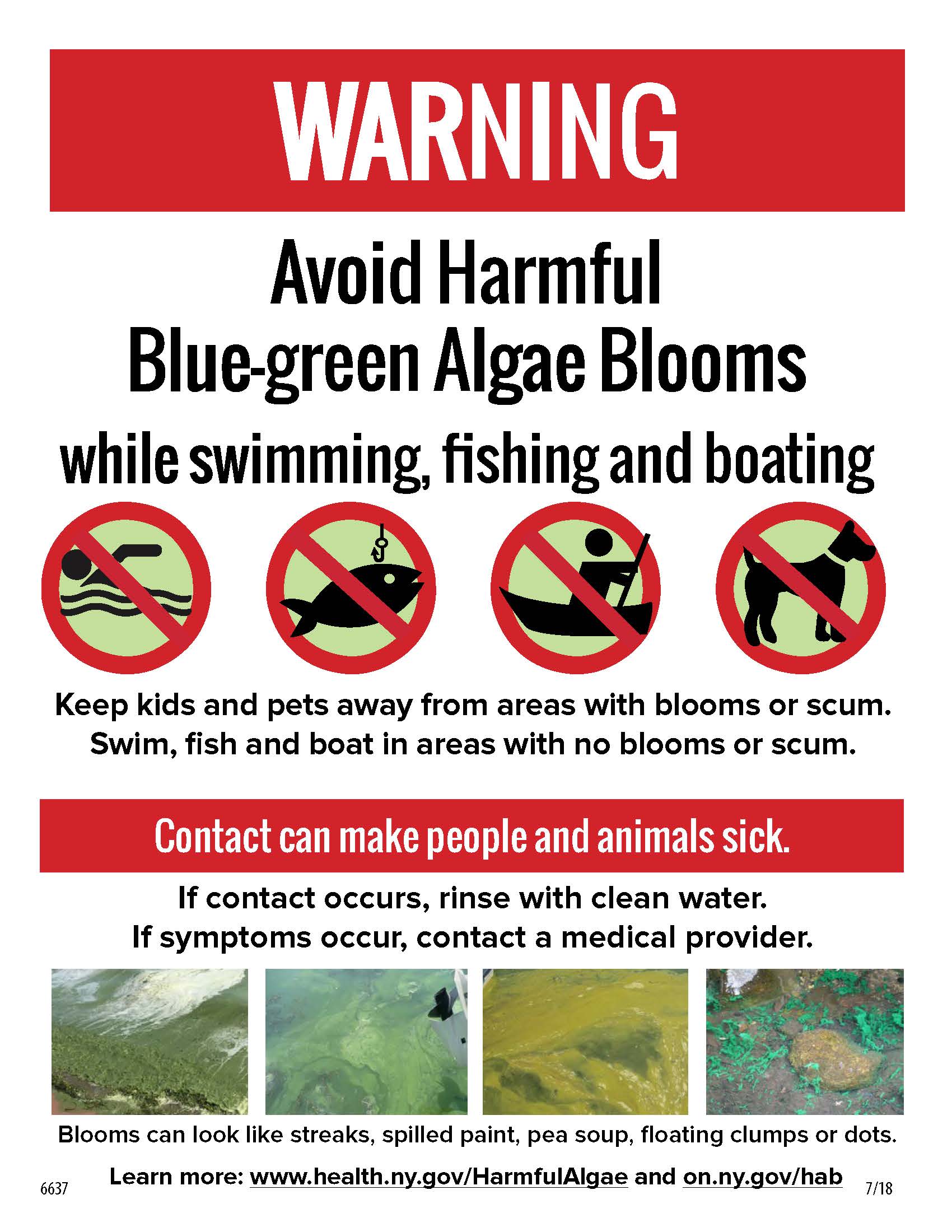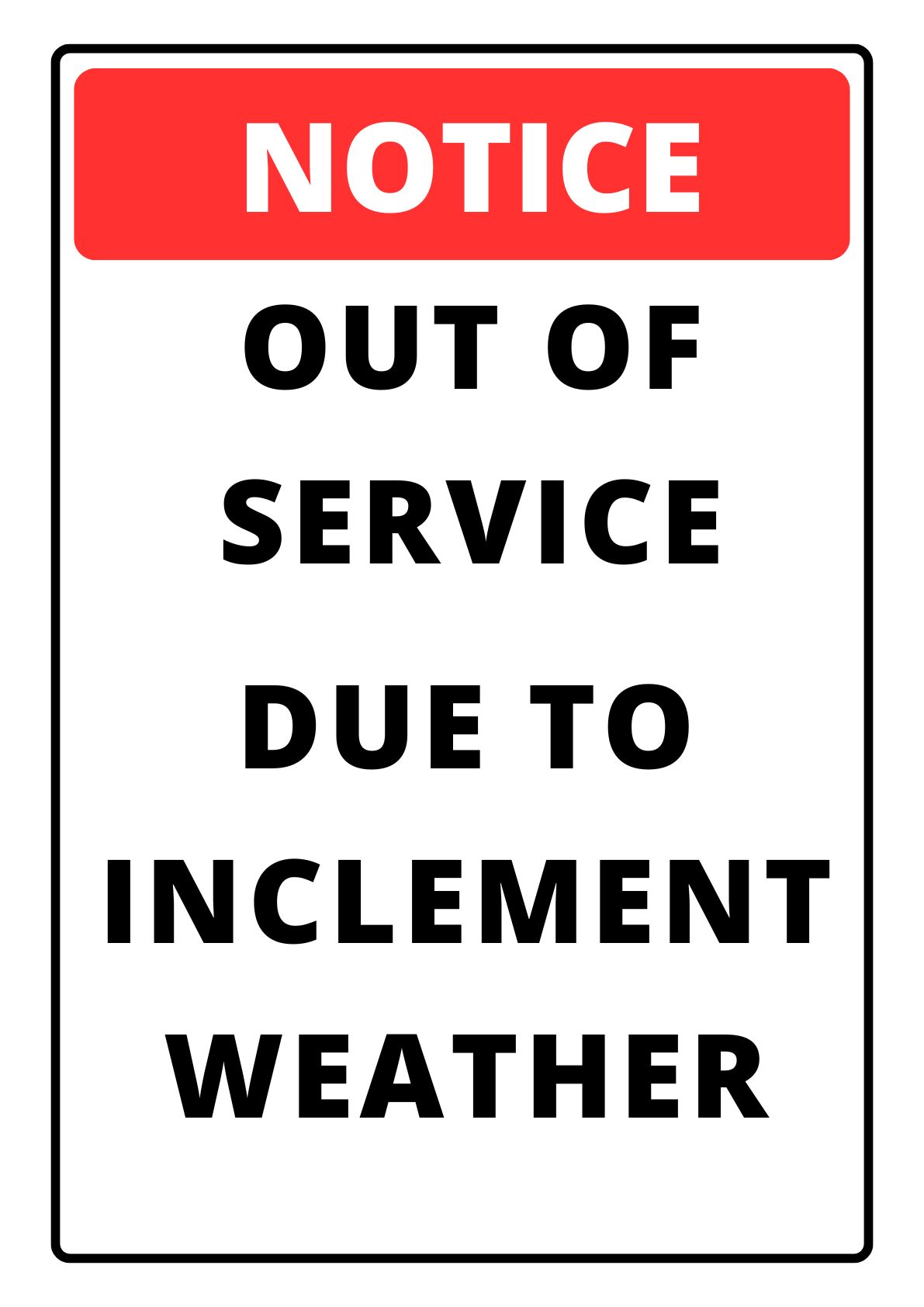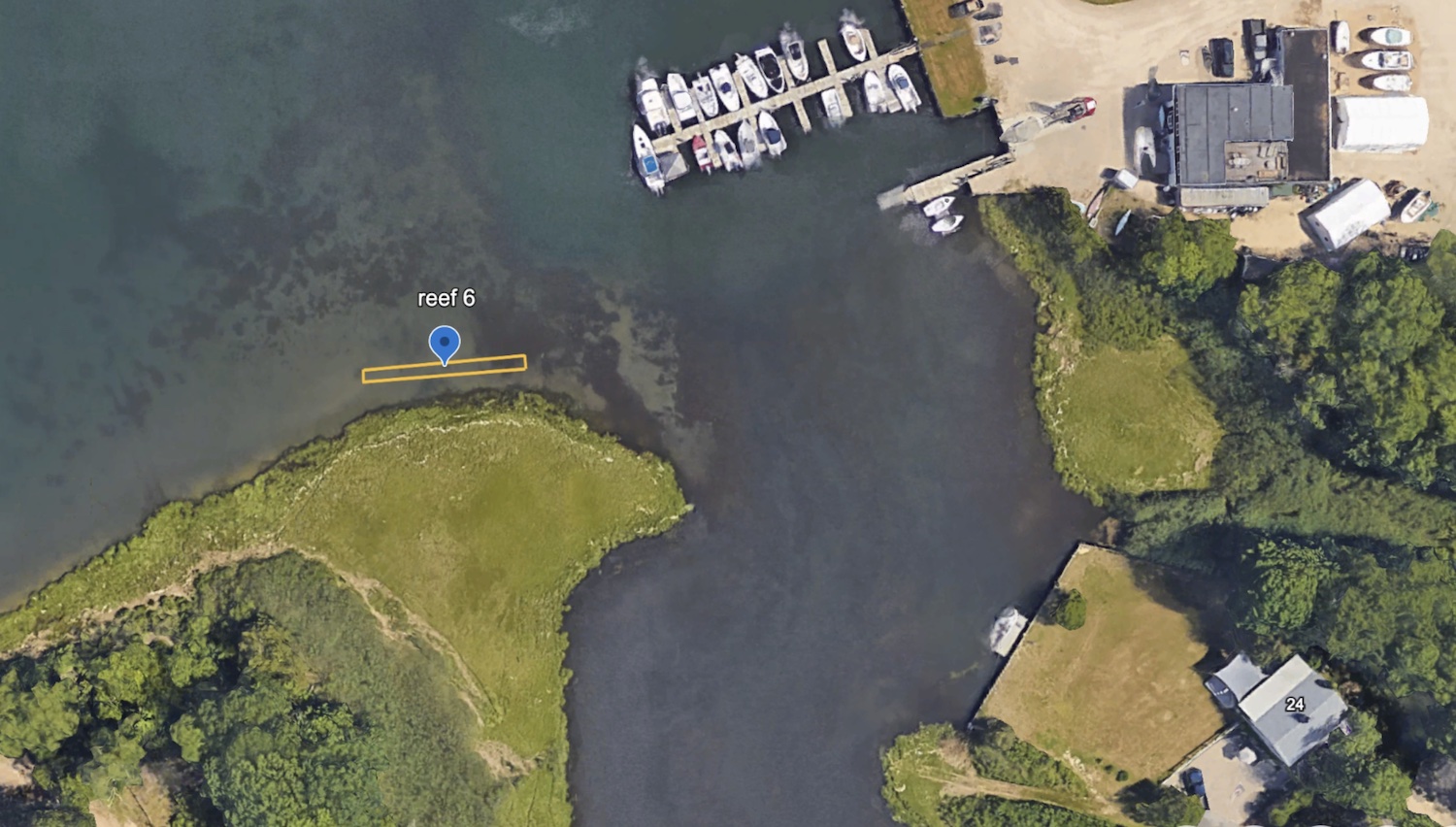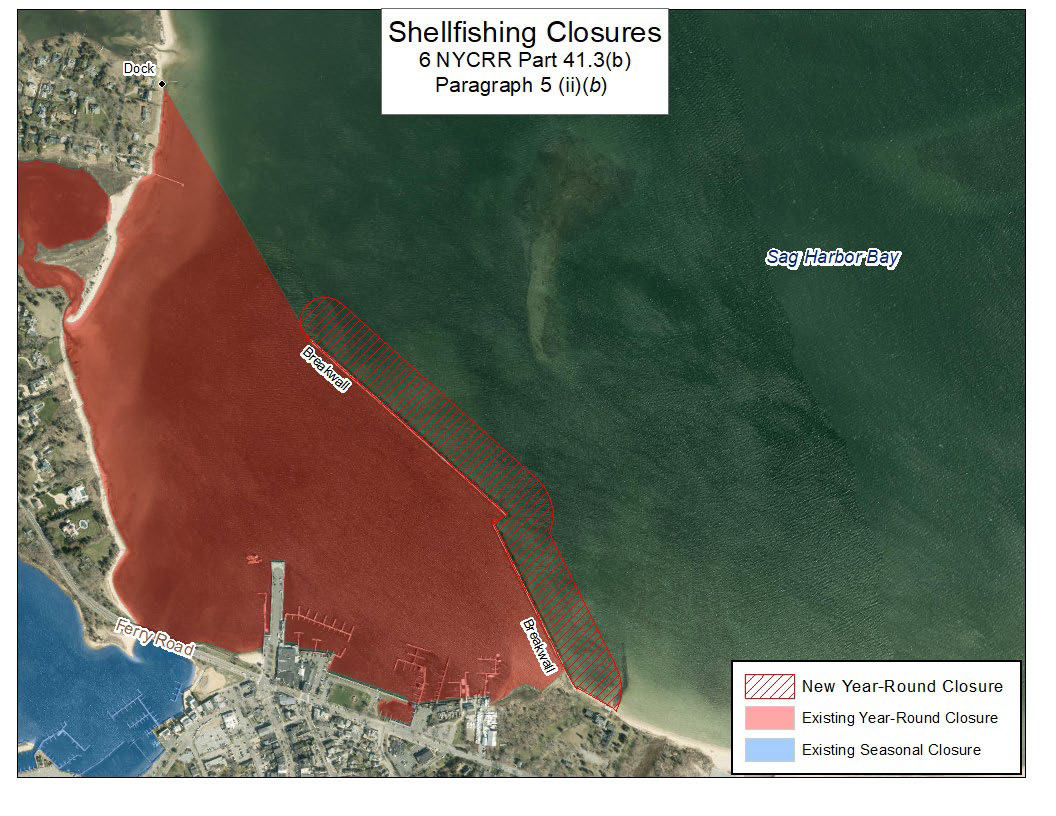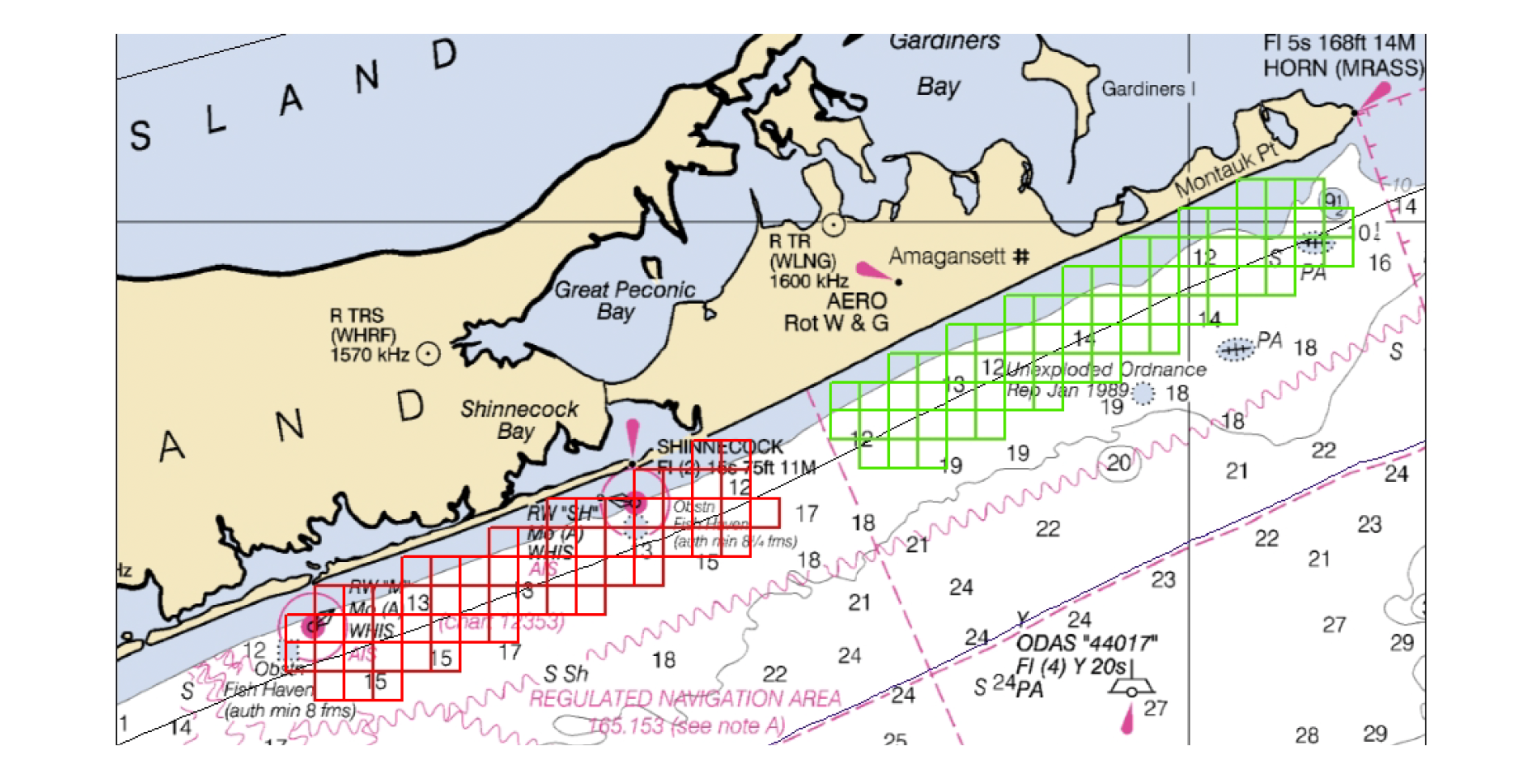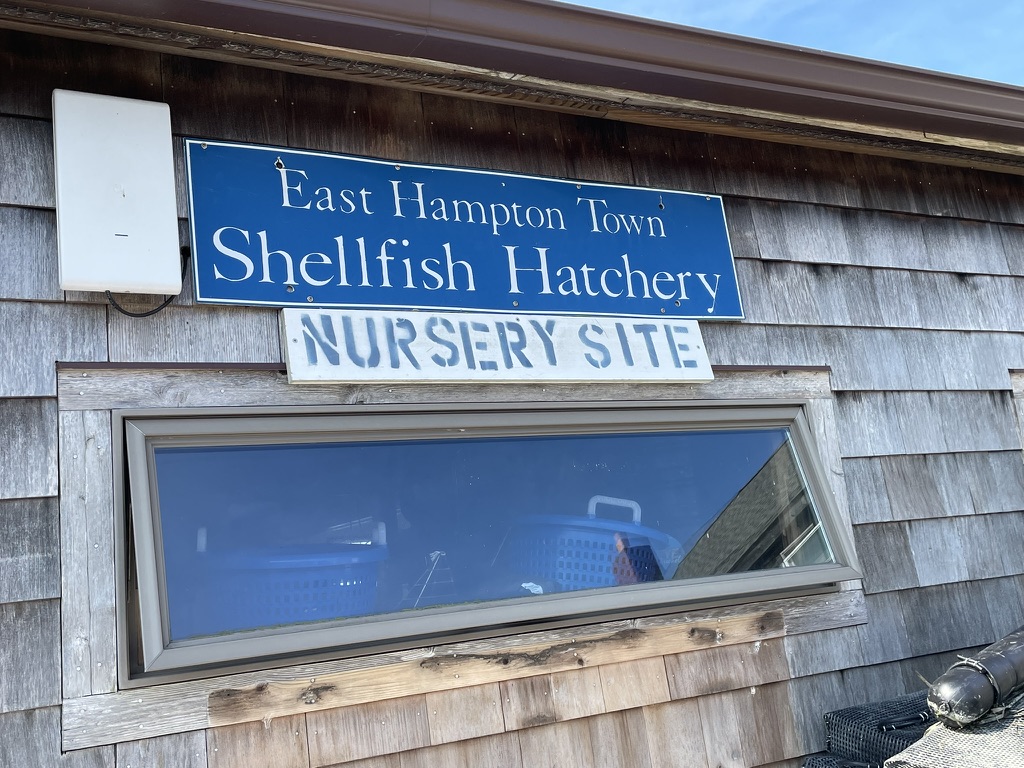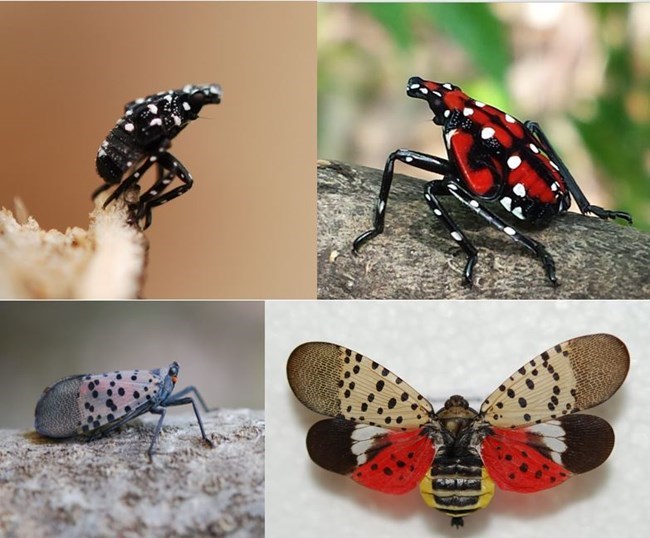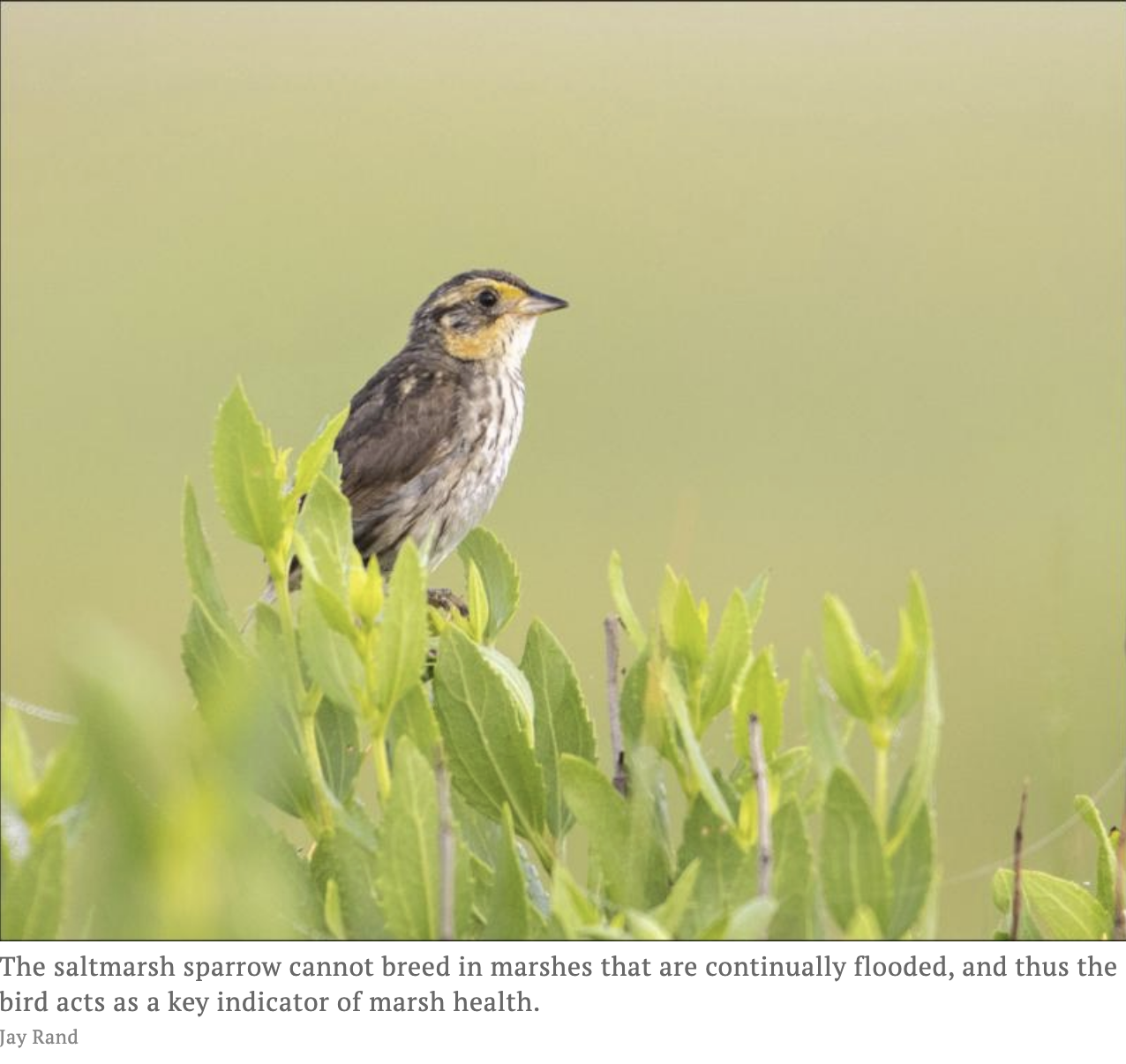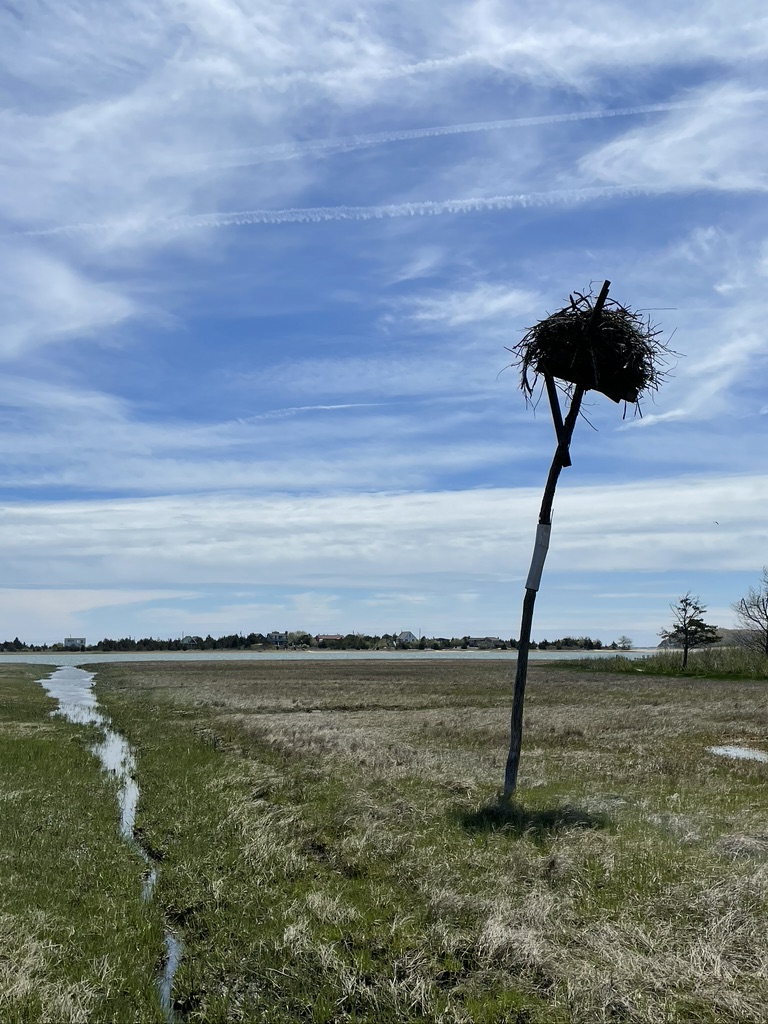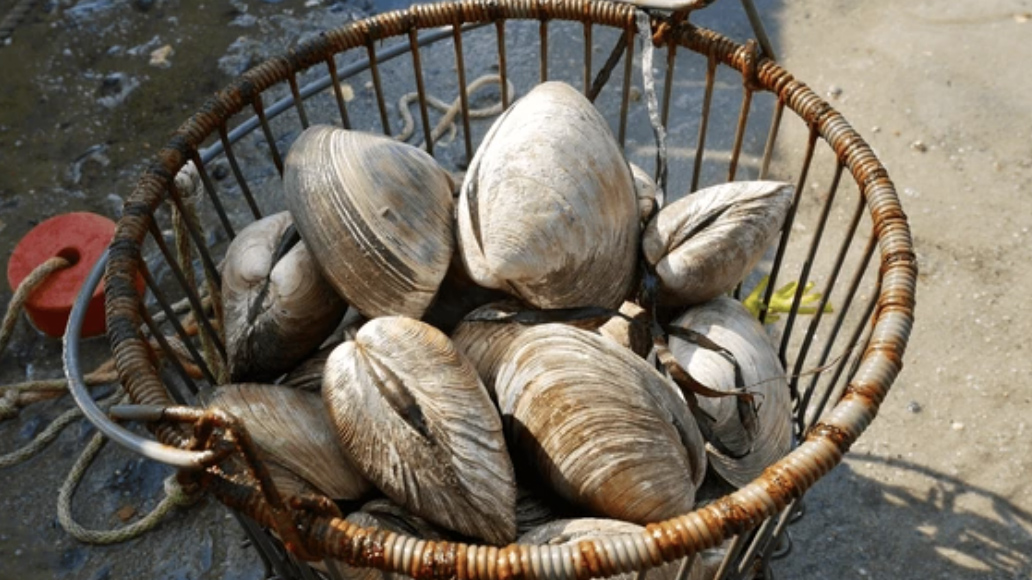Mark your calendar! This year, the Largest Clam Contest will be held on the traditional Sunday, October 5th, 2025. Details and instructions for entering the clam chowder contest are below!
Image of a sign warning of the presence of Harmful Blue-Green Algal Blooms. Please be advised that analysis of surface water samples taken by SUNY Stony Brook has confirmed a new cyanobacteria bloom in Georgica Pond. Cyanobacteria is more commonly known as blue-green algae. The presence of blue-green algae poses a risk to public health. As such, officials advise residents to avoid using, swimming or wading in the pond. Please keep pets and children away from the area as well. When a bloom is active, it may appear in a variety of colors. Including blue-green, yellow, brown or red. There
UP-DATE: Pump-out service has been restored: August 8, 2025 Due to Hurricane Erin off shore, the pump out service in Lake Montauk and Three Mile Harbor will be suspended. Service in Lake Montauk has been suspended for Wednesday, Aug. 20, 2025 and Thursday, Aug. 21, 2025. Service in Three Mile Harbor will be suspended for Thursday, Aug. 21, 2025. Service in both locations will resume as soon as it is safe to do so.
East Hampton High School students received permission from the Trustees to install a 5th & 6th oyster reef in Three Mile Harbor 8/11/25 East Hampton High School sophomores Zoe McDonald and Hudson Tanzmann, who are interning with South Fork Sea Farmers, the nonprofit educational arm of the town’s shellfish hatchery and its community oyster garden program, came to the August 11th Trustee meeting with Bob Tymann of SFSF to present a plan for an oyster reef installation in Three Mile Harbor. Mr. Tymann has previously worked with the students to help build additional oyster reefs in Accabonac Harbor. Two other
The New York State Department of Environmental Conservation, Shellfisheries Section (department) has determined that Title 6 of the New York Codes, Rules and Regulations (NYCRR) Part 41, “Sanitary Condition of Shellfish Lands” required modification to correct the URL to the webpage that posts notices of changes in classification online. The department has also determined that water quality in portions of Sag Harbor Bay, adjacent to the Town of East Hampton, has changed, requiring reclassification to protect public health. Additionally, technical changes were required to improve enforcement and readability of the regulations in portions of Sag Harbor and Sag Harbor Bay. On August
Cornell Bottom Trawl Survey Notice Cornell Cooperative Extension- Marine Program will be conducting a bottom trawl survey throughout NY state waters from Smith Point Inlet to Montauk Point on approximately August 10 – 15, 2025 (See chart above). The East Hampton Town Trustees commissioned the study of fish migration near the proposed landing site of the South Fork Wind Farm Export Cable. The Cornell bottom trawl survey will be conducted to provide a consistent sampling of finfish and invertebrates in the affected area (green grid) and an associated reference area (red grid). See chart above. Survey data will be used
EH Shellfish Hatchery Gann Road Photo Susan McGraw-Keber To help ensure the safety of New York’s shellfish during the summer months, harvesters and shippers must comply with the following Vp Control Plan requirements and other handling provisions: ALL SHELLSTOCK MUST BE SHADED AT ALL TIMES FROM MAY 1 THROUGH OCTOBER 31 The control measures are intended to reduce the potential for postharvest growth of Vp in hard clams and oysters and risk of Vp illness to shellfish consumers due to consumption of shellfish harvested during the warmer weather months when Vp illnesses are likely to occur in New York Vibrio
Seen on the East End- in Town of East Hampton – The Department of Environmental Conservation (DEC) provides information below. https://dec.ny.gov/nature/animals-fish-plants/spotted-lanternfly Scientific Name: Lycorma delicatul Spotted Lanternfly Adult Spotted lanternfly (Lycorma delicatula) or SLF, is an invasive insect pest from Asia that primarily feeds on trees of heaven (Alianthus altissima) but can also feed on a wide variety of plants such as grapevine, hops, maple, walnut, and fruit trees. While the full impacts of SLF are unknown, the insect will negatively impact the agricultural and tourism industries and may impact New York’s forests. In the US, SLF was first discovered
Several years ago, the Trustees initiated the weekly surveying of the salt marsh at Accabonac Harbor, spearheaded by former Suffolk County Legislator Bridget Fleming, in conjunction with Suffolk County Vector Control, to determine where mosquito larvae were present each summer season. Instead of a helicopter that sprayed pesticide over the entire salt marsh, Trustees John Aldred and Susan McGraw-Keber coordinated with the Department of Natural Resources, the Nature Conservancy, and “citizen scientists” who volunteered to help survey the salt marsh to determine where mosquito larvae were located. The earlier the mosquito larvae are discovered in their growth, the better for
*Due to this week’s unsettled weather forecast, applications are starting today, July 23rd, at noon. *The Accabonac Harbor salt marsh will be surveyed for mosquito larvae locations tomorrow, Thursday, July 24th, by Deputy Clerk Trustee John Aldred and crew. As is standard procedure, the information will be sent to Vector Control. The treatment of pellets will be reported here as soon as the schedule is received. Osprey nest and runnel Accabonac salt marsh Photo Susan McGraw-Keber Suffolk County Department of Public Works – Division of Vector Control crews inspect marshlands that have historically produced large numbers of developing larval mosquitoes.
“Clam powering” or “churning” with a motorboat engine is a method used to harvest soft-shell clams by directing the outboard motor’s propeller towards the bottomland to loosen the soil and expose the clams. This technique is typically employed in shallower waters where clams burrow into the soft sediment. Here’s how it generally works: Engine positioning: The outboard motor is tilted to direct the propeller’s wash towards the seabed. Bottomland disturbance: The force of the propeller creates a powerful current that disrupts the sediment, exposing the buried clams. Clam retrieval: Once exposed, the clams can be easily collected from the seafloor. During last week’s
“As part of the fish monitoring study outlined in the SFW Fisheries Study Work Plan, the Stony Brook University team is conducting a regular visit to the sensor array off Wainscott today to collect data from sensors, replace batteries, and deploy new retrievable moorings alongside the previous moorings. As the Stony Brook team is deploying new moorings alongside the existing moorings there’s no change to the mariners briefing, our standard method for updating mariners on the presence of equipment in navigational waters. Members of the fisheries outreach team, in collaboration with the research team, have worked with the fishing community to select an alternative mooring, one that is smaller, lightweight and retrievable, and is more compatible with commercial fishing in response to the feedback we’ve received from the community on original deployment of cement moorings.”
